There can be your advertisement
300x150
Secrets of Patriarch's Ponds: What the Most Mysterious District of Moscow Hides
A true open-air museum
Patriarch's Ponds is a place where reality blends with legends, and history intertwines with mysticism. This corner of Moscow attracts not only Bulgakov enthusiasts but also those who feel the special atmosphere of an old city. Behind romantic walks and elite mansions lie amazing facts and little-known stories that transform a simple park into a true open-air museum.
Main points from the article:
- Where the ponds are now stood a goat marsh with a dark reputation — people and animals disappeared here;
- Underground streams Cherterya, Bubna, and Kabaniha still flow under asphalt;
- The 'House with Lions' was built in 1945 for generals, but many mistake it for a noble estate of the 19th century;
- Lev Tolstoy, Marina Tsvetaeva, Alexander Blok and other celebrities lived in the area;
- The Ryabushinsky mansion — a masterpiece by Fedor Shevtsov and Gorky's house-museum;
- From 1924 to 1990, the ponds were officially called Pioneer's but people stubbornly said 'Patriarch's'.
Underground rivers and mystical legends
Three underground streams with mysterious names — Cherterya, Bubna and Kabaniha — still flow under the asphalt of modern alleys. In earlier chronicles, it is said that in pagan times, this place was a shrine dedicated to the god Rod, and the stream Cherterya that flowed from the marsh was considered by ancient Slavs to be the boundary between the world of the living and the dead.
Until the end of the 17th century, this place was a goat marsh from which flowed the Cherterya stream and two rivers — Bubna and Kabanka. Local residents raised goats, and their wool was sent to the imperial court. But this place had a dark reputation — it was known for its bad fame in the city: traces of robberies and murders were lost in the marsh.
Legends tell of a mysterious black goat that appeared on the marsh and after its visits, livestock began to decline. The most fantastic legend about Patriarch's Ponds goes like this: before the Great Patriotic War, a loving couple wandered here. They decided to bathe. The young man swam to the middle of the pond, then began to sink: his legs turned to stone and the water around bubbled. The girl rushed to help… The young man awoke alone, never seeing his beloved again.
Modern residents of the area tell stories about strange phenomena: sometimes cars go out of order, and radio equipment stops working. However, these are more urban myths than confirmed facts.

Photo from website: fotostock74.ru
From Goat Marsh to Patriarch's Residence
In the early 17th century, this place became the residence of Patriarch German. A Patriarch's Sloboda formed on the site of the marsh, which included the Church of Ermolai the Martyr and the Church of Spiridon Trimifuntsky.
In 1683, Patriarch Ioakim ordered the marsh to be drained and three fish ponds to be dug. Fish of high quality were raised in the Presnensky ponds for the patriarch's table, while cheaper fish were raised on Goat Marsh. These three ponds gave their name to the Three-Ponds Lane, which was previously called 'Three Ponds'.
A little-known fact: during the patriarchate, religious deviants were still burned there — elders, old believers, Jewish converts and other heretics. Executions took place until the first half of the 18th century.
After the abolition of the patriarchate, the ponds were abandoned and the area once again became marshy. After the fire of 1812, three ponds from the former Patriarch's Sloboda were buried, and only Patriarch's remained.
'House with Lions': Soviet Classicism in the Veil of a Noble Estate
The most notable building near the ponds is 'House with Lions' in Ermolayevsky Lane, 9 — it keeps a surprising secret. Most passers-by believe it to be a noble estate of the 19th century, but in fact this magnificent house was built in the middle of the 20th century as a residence for the General Staff of the Soviet Armed Forces.
The first name of the house in the early construction period, 1939-1940, was 'Residential House of the Supreme Command', and then a new name appeared — 'Residential House of the General Staff of the Soviet Armed Forces'. It was completed after the war in 1945-1946 by architects of the Military Project M.M. Dzis and Nikolai Ivanovich Gairgarov.
The project was supervised by the famous architect Ivan Vladislavovich Zholtovsky, and Ermolayevsky Lane was called Zholtovsky Street from 1961 to 1994.
Eight half-columns with Corinthian capitals decorate the facade, and the lion sculptures were made by V.A. Lvov — an amazing coincidence of surname with his creation!
There is a version that the lions were placed to commemorate the memory of Lev Vladimirovich Rudnev — a famous Soviet architect.
Fedor Shevtsov and Architectural Masterpieces
Fedor Shevtsov is the most famous architect of this area. Near Patriarch's Ponds, he built two private homes: the first in a modern style ('an unimportant architectural hut', as he himself said), in Ermolayevsky Lane, and the second — a neoclassical mansion on the Garden Ring.
The first was replaced by a residential building of the 'Thermal Concrete' trust, and the second is now the Allee of Architect Shevtsov Square with a memorial cross in the center. It was here that the famous architect first baptized himself from Catholicism to Orthodoxy, and later was buried.
The pearl of the area is the Ryabushinsky mansion on Malaya Nikitskaya Street, where Gorky lived during the Soviet period. Today it is a writer's museum but the building remains a masterpiece of Russian modernism.
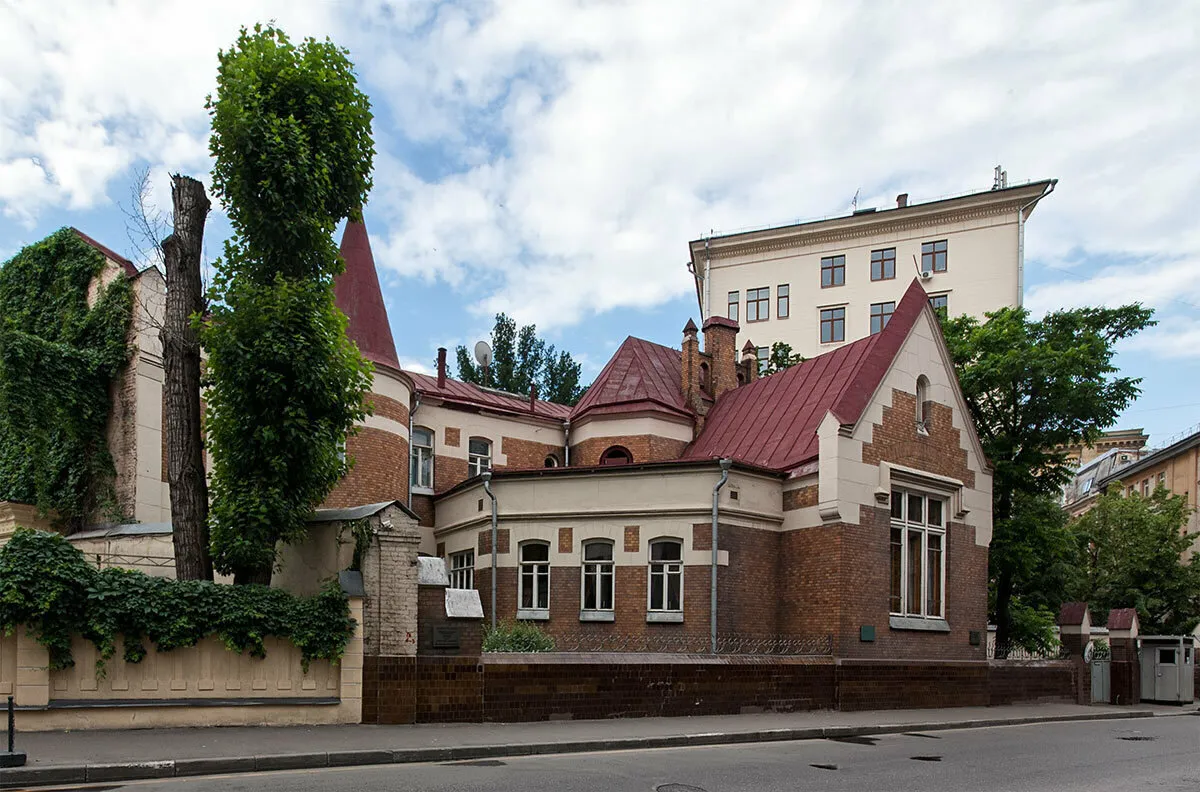
Photo from website: vagankovo.net
Famous Residents: From Classics to Generals
Patriarch's has always attracted celebrities. Marina Tsvetaeva was born and lived for some time in Three-Ponds Lane. Leo Tolstoy came here to skate in winter. Alexei Tolstoy loved walking along the water body. Alexander Blok lived in one of the lanes for some time. Anton Chekhov rented a house before his journey to Sakhalin. Poet Vladimir Mayakovsky lived in this district.
Close to Patriarch's Ponds lived the great scientist Ivan Sechenov with his wife — the first Russian ophthalmologist Maria Obucheva.
In the early 20th century, Patriarch's Ponds became known as a district where representatives of Moscow's bohemia gathered. Poets Alexander Blok and Vladimir Mayakovsky lived in the houses of the Marconet brothers and Elychinsky at different times. Ballet master Alexander Gorskii lived in Ermolayevsky Lane, and opera singer Leonid Sobolev rented an apartment at No. 24 on Malaya Bronnaya Street.
Here were workshops where famous artists like Surikov and Polenov created their masterpieces.
Mansions with History
In 1814, writer and former justice minister I. [Dmitriev] built his house on Spiridonovka Street.
In 1912, architect Ivan Zholtovsky built the mansion of Gavriil Tarasov — another masterpiece of neoclassicism in the area.
Right by the pond, income houses began to appear in the 1910s. One of the first was the house of N.A. Sebyryakov, built in 1911 in a neoclassical style. Here lived artist A.V. Lentulov, where S.A. Yesenin, P.P. Konchalovsky, M.A. Voloshin, I. Severyanin, R.R. Falk, I.I. Mashkov, A.N. Tolstoy and A.Ya. Tairov once stayed.
Bulgakov's Mysticism and Modernity
The novel 'The Master and Margarita' made Patriarch's a cult place. Here Berlioz gets hit by a tram turning from Ermolayevsky to Bronnaya. For a long time, this fact was considered fiction because the nearest tram line was on Sadovaya Street.
From 28 options, the project of sculptor Alexander Rukavishnikov was chosen. The sculptor proposed not just to install a monument to the writer, but to create an entire sculptural ensemble around it — including Bulgakov sitting on the shore of the pond, walking on water Jesus of Nazareth, and a 12-meter bronze stove-fountain. But local residents opposed such magnificence.
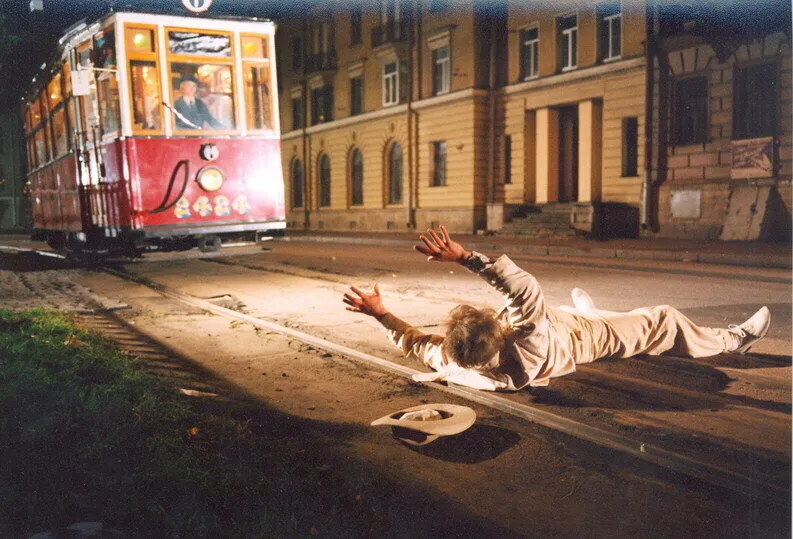
Photo from website: brl.mk.ru
Forgotten Facts
- In 1924, Patriarch's Pond and Patriarch's Lanes were renamed Pioneer’s. But the pond was still called Patriarch's — popular memory proved stronger than official decisions.
- Since the 19th century, concerts have been held on Patriarch's Ponds in summer and a free skating rink is built in winter. Leo Tolstoy used to take his daughters here for skating.
- In 1974, a monument to Ivan Krylov was installed on Patriarch's Ponds surrounded by twelve characters of the author, sculptors being Andrey Drevin and Daniel Mitlyansky.
- In 2002, a residential building 'Patriarch' was built on the corner of Malaya Bronnaya Street and Ermolayevsky Lane according to architect Sergey Tkachenko's project, which adorns a model of Tatlin's tower. According to historian Vladimir Paperny, this house is one of the worst examples of 'Luzhkov architecture'.
Modern Mysteries
Today, Patriarch's is one of the most expensive districts in Moscow. According to some agencies, one square meter in this urban cluster costs more than 1.5 million rubles on average.
But the area's main wealth is not the price per square meter, but the amazing concentration of history in a small space. Here each house can tell its story, every lane remembers outstanding people, and under the asphalt ancient streams flow, remembering pagan Moscow.
Patriarch's Ponds remain a place where the past has not gone into history, but continues to live alongside the present. And perhaps precisely for this reason, it is so easy to believe in any mystical story — after all, the atmosphere of the district invites miracles.
Cover photo from website: fotostock74.ru
More articles:
 8 Successful Design Solutions We Borrowed from the Most Functional and Aesthetic Two-Room Apartment
8 Successful Design Solutions We Borrowed from the Most Functional and Aesthetic Two-Room Apartment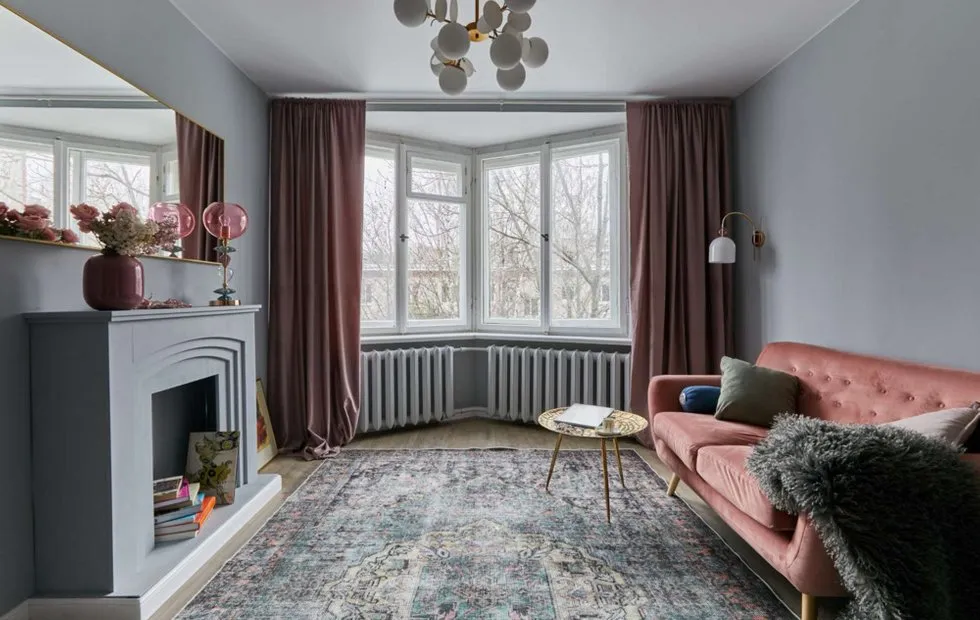 Do You Need to Wash Windows Before Winter or Can You Wait Until Spring
Do You Need to Wash Windows Before Winter or Can You Wait Until Spring Scandinavian Style Is Dead: Which Interiors Went Out of Fashion in 2025
Scandinavian Style Is Dead: Which Interiors Went Out of Fashion in 2025 Jennifer Aniston Back on Air, and 'The Office' Returns: 5 Shows That Will Blow Away September
Jennifer Aniston Back on Air, and 'The Office' Returns: 5 Shows That Will Blow Away September Cozy TV Zone for the Whole Family: 6 Stylish Ideas for Decoration
Cozy TV Zone for the Whole Family: 6 Stylish Ideas for Decoration Maximally Thought-Out Kitchen in a New Building 33 m²
Maximally Thought-Out Kitchen in a New Building 33 m²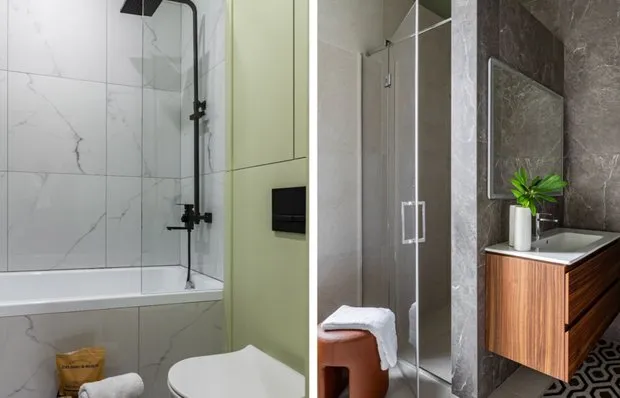 5 Common Mistakes When Designing a Combined Bathroom
5 Common Mistakes When Designing a Combined Bathroom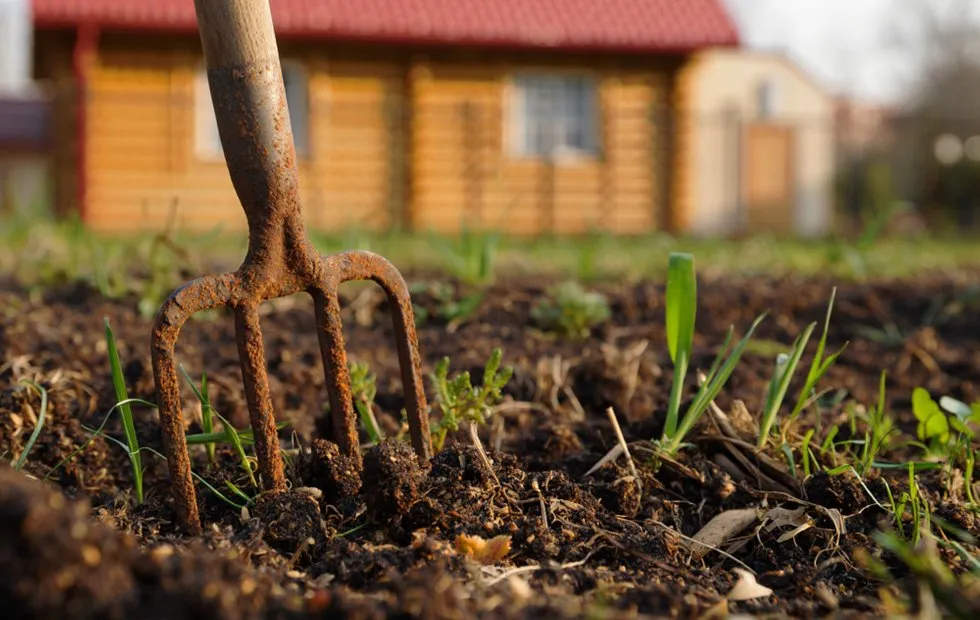 Do You Need to Replant the Garden in Autumn or Is Raking Enough
Do You Need to Replant the Garden in Autumn or Is Raking Enough